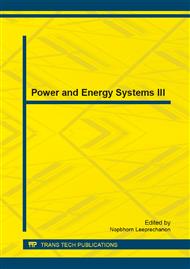p.153
p.162
p.169
p.173
p.178
p.182
p.186
p.190
p.195
Research on an Accident of 500 kV Gas Insulated Transmission Line
Abstract:
Gas insulated transmission line (GIL) is increasingly being utilized in the power system because of its advantages, such as large transportation capacity, no insulation ageing, low loss, and low electromagnetic radiation. However, even GIL equipment in operation can go wrong under the influence of various factors. This paper is an in-depth analysis on a 500kV GIL fault resulting in the tripping operation of a substation chief transformer. The causes of the accident are discussed from several aspects, such as insulation defect, design of gas inlet port, and effect of temperature on the water in the GIL. Some suggestions are given for the structure design, manufacture, installation, and operation of GIL.
Info:
Periodical:
Pages:
178-181
Citation:
Online since:
January 2014
Price:
Сopyright:
© 2014 Trans Tech Publications Ltd. All Rights Reserved
Share:
Citation:


